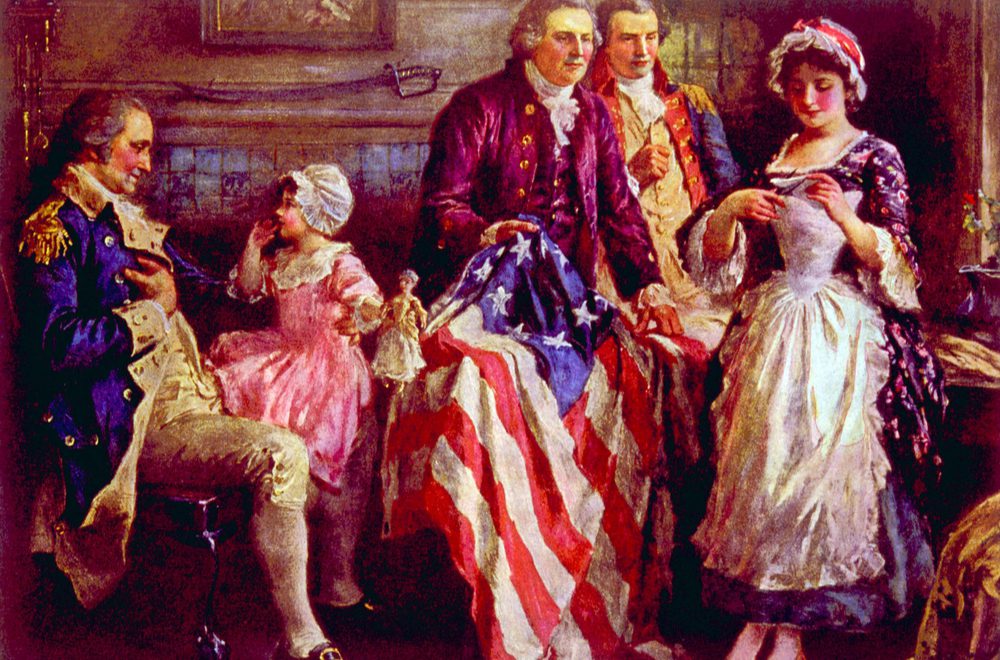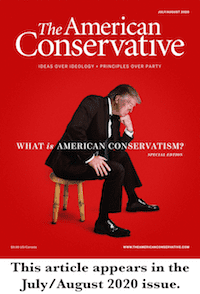A Counterrevolutionary Force

Before it became a political term, “conservative” was the antonym of “destructive.” When the word acquired political significance in the English language beginning in the early 19th century—Britain’s Conservative Party was founded in 1834—this older definition continued to be part of its meaning in the new context. The political forces that conservatives opposed, such as liberalism and radicalism, were inclined toward destruction. Those liberals and radicals who most admired the French Revolution were candid about this: they wished to destroy the existing legal, religious, social, and economic order so as to build a better, more rational one in its place.
Conservatism is a counterrevolutionary force: the antithesis of Jacobinism and Bolshevism, not simply as historical movements but as revolutionary tendencies to which the Left—and sometimes the Right—is susceptible. But conservatism is not simply the negation of incendiary ideology; it is also affirmation of a principle—the anti-utopian view that, despite its flaws, our civilization is worthy of our loyalty, even unto death.
You may have heard that American conservatism is not really conservative at all, it’s just “classical liberalism.” America was born in revolution, and as Louis Hartz influentially argued in the 1950s, Lockean liberalism is virtually our sole tradition. True conservatism arises from feudalism, which means that in this country it exists only as an exotic import, displaced in space and time from the lands of Habsburgs or Romanovs.
This is what liberals would like American conservatives to believe, but the opposite is more nearly the truth: conservatism is not classical liberalism; rather, what is best in classical liberalism depends on conservatism. To understand this, one must return to the historical milieu in which “conservative” and “liberal” became political terms. In the 1830s these words indicated on both sides of the Atlantic opposing attitudes toward the French Revolution and its legacy. Writing in the North American Review in 1835, Thomas Jefferson’s biographer B.L. Rayner retrospectively applies the labels to the two great factions of American politics in the first decade of the republic: “If Mr. Jefferson and his friends sympathised, as every one knows that they did, with the liberal party in Europe, their opponents, the Federalists of that day, sympathised in like manner with the aristocratic, or as it is now called, legitimate or conservative party in Europe—the party which, in order to avoid any epithet in the least degree offensive or even questionable, we have called the party of Law.”
In Britain, the Conservative Party developed out of a longstanding coalition of anti-revolutionary Whigs and Tories who at one stage had been known as the “Friends of Pitt”—that is, political allies who carried on the anti-French policies of the “independent Whig” Prime Minister William Pitt the Younger, who had died in 1806. In the U.S., the anti-French faction of the 1790s was the Federalist Party, and although George Washington’s administration, like Pitt’s ministry, was notionally above party, in practice Washington was very much aligned with the anti-French, pro-British, counterrevolutionary politics of his Treasury secretary Alexander Hamilton and his vice president and successor John Adams. America’s first government was conservative.
The Federalists did not long survive the election of Thomas Jefferson as president in 1800, but the extinction of a conserative party did not mean the extinction of conservative, counterrevolutionary politics, which lived on within Jefferson’s own party. Jefferson himself had cooled in his revolutionary ardor, and conservatism prevailed even under America’s first liberal president.
The fact that America’s war of independence had been a revolution, and that John Locke’s philosophy was at the heart of its Declaration, is not the refutation of American conservatism that might be imagined. No less a foe of Jacobinism than Edmund Burke cherished another revolution, after all, one that was conservative rather than destructive—the “Glorious Revolution” of 1688 that had established the constitutional order Burke strove to defend. Locke, for his part, had presented his Second Treatise as a justification of the Glorious Revolution. That revolution, like America’s nearly a century later, was understood by the revolutionaries themselves as a change in continuity with the nation’s historic principles. When the Americans invoked Lockean ideas, they did so in the full knowledge that George III’s own legitimacy in England rested in the eyes of many of his subjects—especially those of parliamentary Whigs who were already skeptical of the war with America—on the Lockean interpretation of the Revolution of 1688. The British could not deny the Americans their rights without at the same time denying part of the foundation of Britain’s own constitution: the Declaration of Independence in effect made a conservative, originalist argument.
There was much historical mythologizing involved in the Glorious Revolution and the American Revolution. But the impulse to reconcile such alterations in government with the historical character of the nation was a conservative motive, in sharp contrast to the rationalistic and radically transformative impulse behind the likes of the Jacobins or the Bolsheviks. As for Britain’s legitimist opponents of the Glorious Revolution—the Jacobite Tories who believed Parliament was wrong to depose James II—their conservatism was real but hopeless. Conservatism must actually conserve. The ancien regime proved to be unsalvageable everywhere: in Stuart Britain, Bourbon France, Habsburg Austria, Romanov Russia, even imperial China. Italy’s Catholic faith was not enough to preserve the Papal States, either.
The age of ideological revolution has not ended; the revolutionary spirit has only assumed new forms. In China, still ruled by a Communist Party, it has become institutionalized, and the revolution is advanced not in the crude manner of the old Soviet Union but through a strategy of global economic transformation, coupled with ruthless reeducation programs at home. In the West, liberalism has cut loose from its civilizational roots, and from all conservative restraint, and has become an ideology of cultural revolution combined with an acceptance of the global economic reconfiguration also desired by China.
The conservative’s task today, as during the French Revolution and the Cold War, is counterrevolutionary. But now the revolution is truly global, and though it may not be as violent as in centuries past—not yet—the stakes are hardly lower. America and her conservatives will need the utmost resolve, and a deep commitment to the sources of our civilization, if we are to prevail again. Yet until now, at least, Providence seems to have intended the Anglo-Americans to be the firefighters against the conflagration.
Daniel McCarthy is the editor of Modern Age: A Conservative Review, and editor-at-large of The American Conservative.
Related: Introducing the TAC Symposium: What Is American Conservatism?
See all the articles published in the symposium, here.